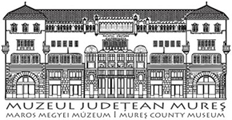Marisia - Maros Megyei Múzeum Évkönyve 30/1. (2010)
Articles
88 N. Man-D. Cioatä-C. Cri$an and the third one was a later adjustment. This latter one did not cover the entire surface of the grid; it needed to fill the cracks that appeared due to the usage of the kiln and the high temperatures reached inside. Because of these layers, the aspect of the heath transmission holes was round and not rectangular, with an average diameter of 12 cm. The existence of only one layer of restoration of the grid might lead to the conclusion that it was only used a few times. This fact is pretty much clear, since except for the parts lost because of the excavator, the general state of preservation is very good. The brick firing room was preserved up to 76 cm. Its walls were the upward extension of the ignition room’s walls. In the process of clearing the grid, we found pieces of the eastern wall crushed on the floor of this room. Given the general features of the installation, we consider that it was destined to function for many batches of bricks. As it was constructed straight into the ground, the access in the brick firing room was made from the upper part. Probably the batch, after being stacked on the grid, was covered with a layer of clay and had holes or some kind of chimney, that permitted the air to ventilate the room. The batch was further more protected by a supplementary roof, as proved by the two post holes in the southern part of the kiln (up, on the hill slope), with a diameter of 10 cm, detected in the same archaeological layer. In the same area tiles, pieces of gutter tiles and pottery were found (PI. 2/1; 3/2). The pottery fragments belonged to red coloured common use vessels. Most of them are non-typical fragments, except from a fragment from to a medium sized bowl (rim diameter of 24 cm). It had a straight and rounded rim, curved walls and most probably annular bottom (this part is missing). Best represented is the tegular material: 5 tile fragments with the ALA I BOSP (Ala I Bosporanorum) stamp, several unstamped ones and fragments of gutter tiles. A typology of these stamps has already been made by N. Gudea and A. Zirnyi5 and we can assign the ones we found to the IIIrd type (PL 3). Unfortunately, it does not provide us with enough pieces of information to help us date this discovery more precisely. As it is widely acknowledged, the discovery of kilns - whether for producing construction materials or pottery with various functionalities - is the best proof that we are dealing with a pottery workshop. Whenever these kilns are in certain archaeological connection with other complexes waste pits for scraps, finished products, characteristic tools, etc. we can undoubtedly discuss about genuine workshops. About pottery workshops and kilns discovered at Criste^ti, only few data and descriptions are kept from the authors of the previous researches. During the excavations made by A. Filimon and Al. Ferenczi five kilns were discovered (three circular and two rectangular). A rectangular kiln was discovered in 1972 by A. Zrínyi. All the data that we have prove the fact that the roman kilns from Criste§ti produced only pottery and this is the only brick kiln discovered up to now. Probably most workshops were concentrated in one area of the settlement (like in other settlements with similar findings),6 certainly close to the Mure§ River. Also, archaeological discoveries from 2000, on the right bank of Mure§ River, lead us to the hypothesis that the settlement had an extended workshops area and an inhabited area on that side of the river also. 5 Gudea-Zrinyi 1977, 223-232; Gudea-Zrinyi 1984, 51-58. 6 Protase-Dänilä 1965, 583-587; Floca et al. 1970, 14-16; Benea 1982, 22-40; Lipovan, 1984, 301-317; Mitrofan 1993, 36; Pop 1994, 42; Moga 1996, 9-19; Mu^eteanu 1996, 17-22; Popilian 1997, 7-21; Ardevan 2001, 319-329.
